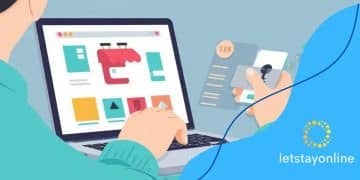Best practices for managing credit card debt wisely

Best practices for managing credit card debt include understanding your credit report, making timely payments, keeping your credit utilization low, and avoiding common pitfalls like only making minimum payments.
Best practices for managing credit card debt are essential for anyone looking to improve their financial situation. Have you ever felt overwhelmed by your credit card bills? Let’s explore some actionable strategies that can help you take charge of your finances.
Understanding credit card debt
Understanding credit card debt is crucial for anyone looking to manage their finances effectively. Many people experience challenges with credit card payments, which can lead to financial stress. By gaining a better grasp of how credit card debt works, you can make informed decisions to improve your financial situation.
What is Credit Card Debt?
Credit card debt is the amount you owe on your credit card after making purchases. This debt can accrue interest quickly, especially if you do not pay your balance in full each month. It’s important to understand that carrying a balance can lead to significant financial burdens over time.
Why Does Credit Card Debt Increase?
Several factors contribute to the rise of credit card debt, including:
- High interest rates on outstanding balances.
- Late fees for missed payments.
- Excessive spending beyond your means.
- Failing to create a budget and stick to it.
Being aware of these factors helps you take control of your spending habits and manage your credit card debt better. Many people find themselves in a cycle of debt because they don’t fully understand how their payments and interest work. This lack of knowledge can lead to overspending and reliance on credit cards.
How to Monitor Your Credit Card Debt
Monitoring your credit card debt involves keeping track of your spending and payments. Consider these tips:
- Review your credit card statements regularly.
- Set up alerts for payment due dates.
- Use budgeting apps to track expenses.
By consistently monitoring your credit card usage, you’ll be better equipped to avoid debt spirals and manage your finances effectively. Remember, understanding your credit card debt is the first step toward financial stability.
Choosing the right credit card
Choosing the right credit card can significantly impact your financial health. With so many options available, navigating this decision might seem overwhelming. Understanding the features you need is essential to make an informed choice.
Types of Credit Cards
There are various types of credit cards available, each designed for different needs:
- Rewards cards: Earn points or cash back on purchases.
- Low-interest cards: Offer lower rates for carrying a balance.
- Balance transfer cards: Help consolidate and pay down existing debt.
- Secured credit cards: Require a deposit and help build credit for beginners.
By evaluating your spending habits, you can identify which card type aligns with your financial goals. For instance, if you travel frequently, a rewards card offering travel benefits may be ideal. Knowing what each card type offers helps you select wisely.
Key Features to Consider
When choosing a credit card, remember to consider these key features:
- Annual fees: Some cards charge a fee, while others do not.
- Interest rates: Compare annual percentage rates (APRs) to find the best rate.
- Rewards program: Understand how the rewards system works before applying.
Additionally, look at the card issuer’s customer service reputation. Choosing a credit card with excellent support can make a significant difference, especially if you encounter issues or have questions.
It’s also helpful to read reviews and do some research. You want to ensure you’re picking a credit card that suits your spending style and will lead to benefits rather than more debt.
Strategies for paying off debt

Implementing effective strategies for paying off debt can help you regain control of your finances. It doesn’t have to be a daunting task when you have a clear plan in mind. By adopting the right approaches, you can reduce your debt burden and improve your financial situation.
Debt Snowball Method
The debt snowball method is a popular approach that focuses on paying off your smallest debts first. Here’s how it works:
- List your debts from smallest to largest.
- Make minimum payments on all debts except the smallest.
- Use any extra money to pay off the smallest debt first.
Once the smallest debt is paid off, move to the next one. This method provides motivation as you eliminate debts quickly.
Debt Avalanche Method
Another effective method is the debt avalanche method, which focuses on paying off debts with the highest interest rates first. This technique helps save more money in interest over time. Follow these steps:
- List your debts from highest to lowest interest rate.
- Make minimum payments on all debts except the one with the highest rate.
- Use any extra funds to pay off the highest interest debt.
This approach can lead to faster financial freedom as you minimize interest payments.
Creating a Budget
Developing a budget is also essential in managing debt. Track your income and expenses to understand your spending habits. A budget can help you identify areas where you can cut back and allocate more money towards paying off your debts. Consider using budgeting tools or apps to streamline the process.
Moreover, cutting unnecessary expenses can create additional funds to pay down debt faster. Review your subscriptions, dining habits, and shopping patterns to find savings.
Consistent Payments
Finally, ensuring consistent payments is crucial. Make a commitment to pay more than the minimum on your debts whenever possible. Setting up automatic payments can help you stay on track. Staying committed to your repayment strategy will lead to improved financial health.
Avoiding common pitfalls
Avoiding common pitfalls in managing credit card debt is essential for maintaining financial health. Many people face challenges that can lead to increased debt and stress. Understanding these pitfalls will help you stay on track and make smart financial decisions.
Ignoring the Fine Print
Many individuals fail to read the terms and conditions of their credit cards. Ignoring the fine print can lead to unexpected fees and interest rates. Make sure to read:
- Annual fees and whether they apply.
- Interest rates on purchases and cash advances.
- Reward programs and how they work.
By understanding your card’s terms, you can avoid costly errors.
Only Paying the Minimum
Another common mistake is only making the minimum payments. While this might seem manageable, it prolongs debt and increases interest costs. Aim to pay more than the minimum whenever possible. This approach not only reduces your balance faster but also minimizes total interest paid over time.
Using Credit Cards for Everyday Expenses
Using credit cards for all your day-to-day expenses can lead to overspending. It’s easy to lose track of how much you’re charging. Create a budget that limits credit card use to essential purchases, or set a specific threshold to ensure you stay within your financial limits.
Neglecting to Monitor Your Spending
Regularly monitor your credit card transactions. Neglecting this habit can lead to unauthorized charges and debt accumulation. Use budgeting tools or financial apps to track spending and review your statements monthly. Staying informed about your financial activity helps you catch errors and adjust your spending habits.
By being aware of these common pitfalls, you can take proactive steps to manage your credit card debt effectively and avoid falling into traps that can negatively impact your financial future.
Tips for building good credit
Building good credit is essential for achieving financial success. A strong credit score can help you secure loans with lower interest rates and favorable terms. By following some practical tips, you can improve your creditworthiness and manage your finances more effectively.
Understand Your Credit Report
Start by understanding your credit report. This report contains information about your credit history, including your payment history and account balances. Check it regularly for errors and disputes. You can obtain a free report from major credit bureaus once a year.
Make Payments on Time
One of the best ways to build good credit is to make all your payments on time. Late payments can significantly harm your credit score. Set reminders or use automatic payments to ensure you never miss a due date.
Keep Credit Utilization Low
Another important factor is credit utilization, which refers to the amount of credit you’re using compared to your total available credit. Aim to keep your utilization ratio below 30%. This shows lenders that you can manage credit responsibly. If you find yourself close to this limit, consider requesting a credit limit increase or paying down balances faster.
Avoid Opening Too Many Accounts at Once
Opening multiple credit accounts in a short period can negatively impact your credit score. Each application can result in a hard inquiry, which may decrease your score. Instead of applying for several cards at once, focus on building your credit slowly and steadily.
In addition, consider the types of credit you use. A mix of different types of credit, such as installment loans and revolving credit, can improve your credit score. However, don’t take out loans you don’t need just to diversify your credit mix.
Monitor Your Credit Regularly
Finally, regularly monitoring your credit will help you stay informed about your credit status. Use credit monitoring tools to track significant changes in your score. This can alert you to potential identity theft or inaccuracies before they affect your financial standing.
FAQ – Frequently Asked Questions about Managing Credit Card Debt
What is the best method for paying off credit card debt?
The best method depends on your financial situation. The Debt Snowball Method focuses on paying off the smallest debts first, while the Debt Avalanche Method prioritizes the debts with the highest interest rates.
How can I improve my credit score?
To improve your credit score, make timely payments, keep your credit utilization low, avoid opening too many new accounts, and regularly check your credit report for errors.
What should I do if I can’t make a credit card payment?
If you cannot make a payment, contact your credit card issuer before the due date. They may offer alternatives like a payment plan or temporary relief.
How often should I check my credit report?
You should check your credit report at least once a year to ensure all information is accurate and to track any changes that may affect your credit score.






